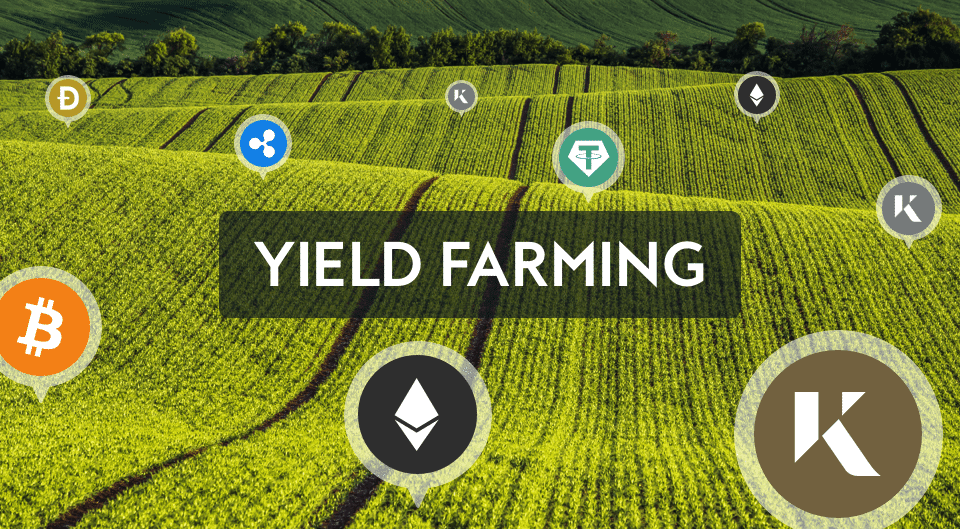In the previous article, we learned about the concept of yield farming, how it works as well as the types of farming today. This article will go about how to calculate the profit and risk that it brings.

How to calculate yield farming returns?
Expected yield returns are commonly used. The anticipated returns are estimated over the course of a year.
Annual Percentage Rate (APR) and Annual Percentage Yield (APY) are two often used measures. The distinction is that APR does not account for the effect of compounding, but APY does. In this context, compounding is reinvesting gains to produce further returns. However, keep in mind that the terms APR and APY can be used interchangeably.
Remember that the two measures are only forecasts and estimates. Even short-term benefits are difficult to predict with precision. Yield farming is a fiercely competitive, fast-paced sector with constantly shifting incentives.
If a yield farming approach works for a while, other farmers will swarm to use it, and it will eventually stop producing large profits.
DeFi will have to develop its own profit estimates because APR and APY are outdated market measurements. Because of DeFi’s quick speed, weekly or even daily predicted returns might make more sense.

The risks of yield farming
Farming for yield is not easy. The most successful yield farming tactics are exceedingly sophisticated and should only be used by experienced farmers. Furthermore, yield farming is often better suited to individuals with a lot of cash to invest (i.e., whales).
Yield farming has enabled a diverse range of decentralized applications, each with its own value proposition and variation on the original architecture. Higher benefits than what consumers might expect from the traditional financial business, however, come with a set of hazards.
Some of the dangers associated with yield farming include, but are not limited to:
Smart contract risk
Blockchains are often regarded as very secure platforms for performing financial transactions. However, the underlying business logic of smart contracts is dependent on code quality as well as the expertise and experience of particular development teams.
Smart contract vulnerabilities, hackers, and protocol exploits can occur in the DeFi ecosystem, exposing depositors to funds loss. Open-source peer-reviewed code, security audits, and excellent testing procedures help developers mitigate this risk, but caution is always necessary.
Liquidation risk
Some yield farming tactics employ leverage to maximize exposure to a liquidity mining opportunity, exposing the user to liquidation risk (capital sold off to repay the debt).
Furthermore, in periods of extreme market volatility and network congestion, the danger of liquidation increases since topping up collateral to prevent liquidation may become prohibitively expensive. If a user chooses a strategy that incorporates leverage, they should consider this danger; otherwise, they should choose non-leveraged alternatives.
Systemic risk
Because of the smart contract ecosystem’s modularity, a particular DeFi application may rely on numerous DeFi protocols, thus increasing the potential risk of a smart contract defect in just one of them. Furthermore, even if a smart contract is safe on its own, it may not be if it is stacked incorrectly with other contracts. Understanding a position’s protocol exposure is critical for mitigating excess risk.
Impermanent loss
The difference in value over time between putting tokens into a multi-token pool in an automated market maker (AMM) for yield farming and merely storing those tokens in a wallet is referred to as impermanent loss. When the price of the tokens in the liquidity pool diverges in either direction, this loss happens.
The ‘loss’ is dubbed ‘impermanent’ because it evaporates as soon as the price ratio between the token pair in the pool returns to its value at the moment of deposit. However, such a condition is uncommon, and the losses in other situations are permanent. Different protocols provide mitigating strategies for impermanent loss, whilst other protocols are not affected by this risk.
“Rugpull” danger
A “rugpull” is a circumstance in which hostile players launch a token in order to extract as much value as possible before quitting the project. Rugpulls may occur in a variety of methods, including eliminating a big chunk of the liquidity from an AMM, blocking selling in the token’s contract, minting a large number of new tokens, and more.
Before electing to engage in a freshly launched project, DeFi users should evaluate the dangers involved with early-stage initiatives and conduct their own due diligence.
To continue learning about this topic, you can follow up here.
DISCLAIMER: The Information on this website is provided as general market commentary and does not constitute investment advice. We encourage you to do your own research before investing.
Join us to keep track of news: https://linktr.ee/coincu
Website: coincu.com
Harold
Coincu News





